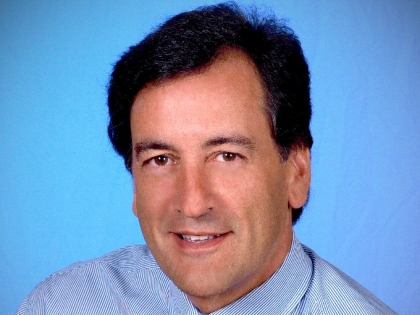
Senator Fuschillo's Testimony to the MTA Board Opposing Proposed LIRR Fare Hikes
Charles J. Fuschillo Jr.
September 15, 2010
Following is the testimony Senator Fuschillo gave to the MTA Board of Directors opposing their proposed LIRR fare hikes at their recent public hearing in Garden City:
Good evening ladies and gentleman.
My name is Senator Charles Fuschillo, and I represent portions of Nassau and Suffolk Counties in the New York State Senate.
I’d like to thank the MTA Board for giving me this opportunity to speak, as well as those in the audience who came here tonight to share their views on the MTA’s proposed LIRR fare increases.
Over the past several weeks, I’ve visited numerous train stations in my Senate District, including Freeport, Merrick, Bellmore, Wantagh, Seaford, Massapequa, and Massapequa Park, and heard from commuters how they can’t afford to pay up to 9.4 percent more in LIRR fares. In addition, over 3,100 individuals signed my online petition against the fare hike, which I have right here.
In short, the problem is simple; the MTA is becoming increasingly unaffordable for Long Island commuters.
They, and I, are asking you to reconsider these proposals and stop treating us like an ATM for the MTA.
We’ve repeatedly paid more and more to bail out the MTA over the last several years. A commuter from Massapequa will be paying over 20 percent more for a monthly LIRR pass if the proposed fare increases are adopted than he or she did just two years ago. That translates into $516 a year more coming out of that person’s pocket at a time when so many are living paycheck to paycheck.
Even those who don’t use the MTA are being forced to pay more. Long Islanders are paying over $79 million a year more in higher DMV fees to fund the MTA, and Long Island employers are paying over $207 million a year more under the MTA payroll tax. This tax, which I strongly opposed, has significantly raised costs on every small business, municipality, non-profit group, and school district. Remember, this tax, if enacted, was enough to not increase fares nor reduce services. We know the truth….
Before turning and asking Long Islanders to pay more yet again, the MTA should do more to find internal savings. State Comptroller Tom DiNapoli estimates the MTA could save about $60 million annually through better overtime management, an area which saw spending increase by 26 percent between 2005-09.
In another report, the Comptroller said better management of the MTA’s vast real-estate portfolio could yield additional savings. Overall, six reports issued by Comptroller DiNapoli on the MTA since 2009 found $296 million in wasteful spending and unrealized savings opportunities.
More needs to be done to cut upper-level expenses. While the MTA implemented painful service reductions, including cuts to the Able-Ride program which serves the elderly and individuals with disabilities, and laid off a number of low level, front line workers, it then turned around and hired a new management level employee to oversee restructuring measures.
As a former OMRDD Commissioner, her Department was found by a State Senate Task Force to have wasted millions of dollars on overtime, housing, and poor cost-containment. As a result, what happens, the MTA hires this individual as an “efficiency expert,” and gives her an $81,000 raise over her OMRDD Commissioner’s salary,
This does not send the message to the struggling taxpayers that the MTA is “trimming the fat.”
In addition to the fare hikes, residents are very concerned that the MTA appears all too eager to end its nearly 40-year partnership with Nassau County as the operator of Long Island Bus.
While both the MTA and Nassau County are facing financial problems, simply leaving tens of thousands of Long Island Bus riders without service should not be an option.
Both the MTA and Nassau County should work in good faith to keep Long Island Bus operating. If the MTA can continue to subsidize other New York City based transit programs, such as the Staten Island Transit Operating Authority, Access-A-Ride, and free MetroCards for New York City students, then a solution can be found for Long Island Bus.
Let me restate that residents are already paying higher fares, tolls, fees, and taxes to fund the MTA. We deserve – and have already paid for - more, not less, from the MTA. At a time when governments and families are being asked to do MORE with Less, the MTA is asking to do less with MORE.
You need to re-consider the proposed fare and toll increases.
As I stated earlier, Long Islanders cannot, and should not, be treated as the ATM for the MTA.
Once again, I greatly appreciate having this opportunity to speak to you. Thank you for your attention and consideration. Good night.
Share this Article or Press Release
Newsroom
Go to Newsroom
